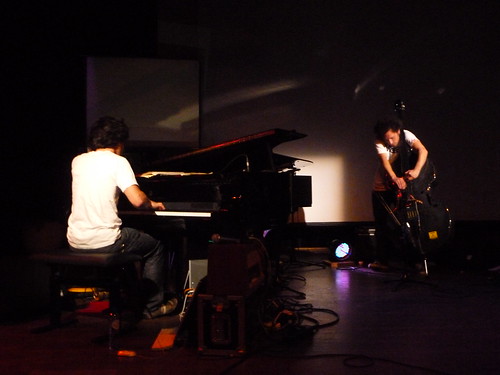Feeling bereft after the event? Post-conference blues (who’s writing that piece of music?)? Us too. Wasn’t it good?! But we have one or two ways of helping you revisit #salfordjazz13, and here is the first. We’ve storified the Twitter conversation, so you can see it all in one place. We’ll add a gallery of photos too soon. Read on …
Tag: attention
Jazz Research Journal special double issue on jazz collectives
Congratulations to Rhythm Changes project team member Nick Gebhardt of Lancaster University for his sterling work as editor of a special DOUBLE issue (that’s over 200 pages, folks) of Jazz Research Journal on jazz collectives: history, theory, practice. You can read pieces in it by other Rhythm Changers, too, among other contributors: Christa Bruckner-Haring, Andrew Dubber, Petter Frost Fadnes, Loes Rusch, as well as Nick’s authoritative introduction. Vol. 5.1-2.
Prof George McKay
MediaCityUK
University of Salford
(sent from my phone)
Institute for Jazz Research library
Rhythm Changes project team meets in this terrific library in Graz. All these books yes are about jazz!!
Prof George McKay
MediaCityUK
University of Salford
(sent from my phone)
Europe Jazz Network Report
Europe Jazz Network has recently published an evaluative research study of its membership. Two documents have been published – an executive summary document outlining the main findings from the research, and an extensive research study displaying both qualitative and quantitative data on the network and its membership. As a member of the research steering group, Rhythm Changes Project leader Tony Whyton was invited to write a foreword for the full report and to share Rhythm Changes’ interviews and case study materials gathered over the last year.
The report provides crucial financial and structural information about jazz organisations across Europe and the report will be used by national agencies, promoters, festivals and policy makers to highlight the impact of jazz in different contexts, as well as the value of collaboration and transnational working.
The report also features case studies on organisations based in our partner countries and showcases the work of Rhythm Changes researcher Christophe de Bezenac’s group Trio VD (who are quoted as part of a case study on the 12 Points! festival. There’s also a photo of the group on page 15!). Over the past year, Christophe was selected to participate in the UK’s Take 5 scheme, and the EJN report includes a case study of the way in which this professional development programme has been extended to the European level.
This is a significant collaborative output for Rhythm Changes and a fantastic example of how Knowledge Exchange is embedded in the research ethos of the project. The full report and Executive Summary can also be downloaded via the EJN website (www.europejazz.net).
Integration and conversation

We’re in Lancaster having a meeting of (most of) the research team, and some of the talk has centred around developing the way in which we use the internet. For some time now, the Posterous site has been something of a backchannel for us to share things with each other and the official WordPress site has been where we show our outputs. But recently, the lines have been blurring, and we have started to think about them as all being part of the same process.
Rather than the websites being about what we do – we’re more interested in them being how we do what we do. To that end – starting with this post – everything that we send to Posterous will now appear as part of the official Rhythm Changes site. We see no need to compartmentalise them any more (though nor do we see a need to shut down the Posterous site).
We’re also interested in using the internet as a conversational space, and to that end, we’re going to start using Twitter more actively – as a research group – but also as individuals. A few of us are already active on Twitter, but this evening we’re going to be doing a workshop and bringing some of the others up to speed.
With any luck, there’ll be a post shortly that provides links to ALL of our Twitter accounts. In the meantime, follow @rhythmchanges for updates – and feel free to join in the conversation there.
And we particularly invite any conversation and response to the ideas, videos and posts in the comments here on the blog.
Some highlights of the conference
The Rhythm Changes conference has come to a close, and this website is now full of excerpts, photographs, video and audio recordings of the event. Not just the panel sessions and keynotes, but also some of the conversations, the music and the context as well.
There’s a lot more to read, look at, watch and listen to if you go back through the blog (start here and just keep scrolling), but I thought it might be nice to compile a few pieces together into this one post – just to give you a flavour of what went on.






